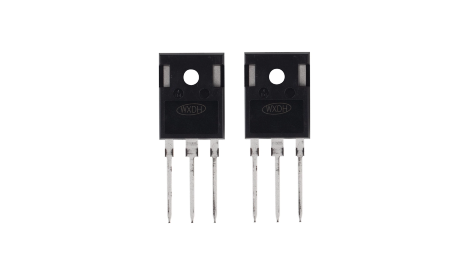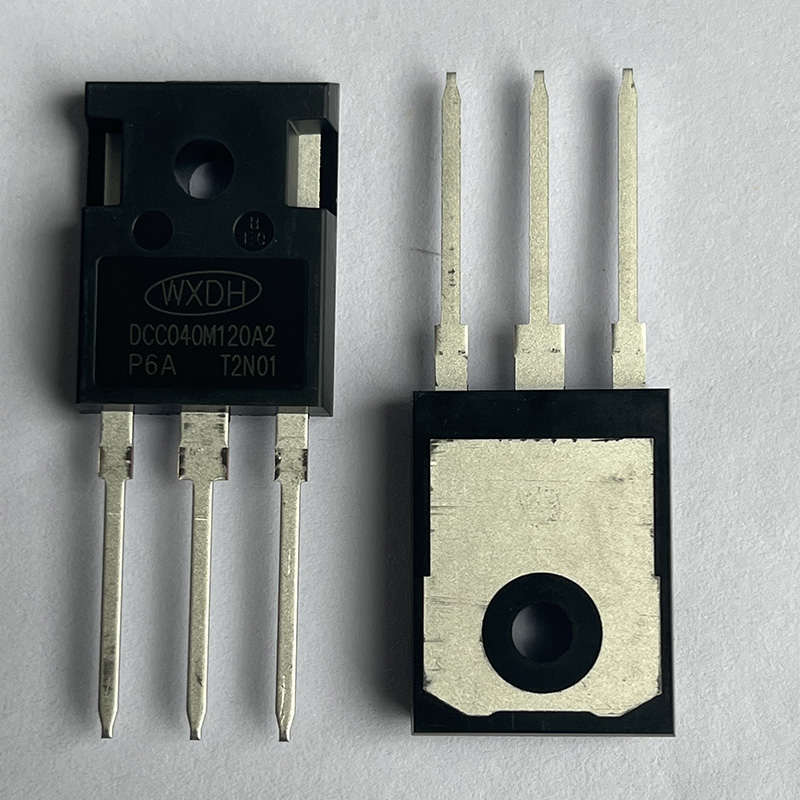
In the fast-evolving world of electronics, where performance, efficiency, and miniaturization are key, one component stands out for its versatility and critical importance — the MOSFET. Whether you're designing a fast-charging phone adapter, an energy-efficient LED driver, or a high-performance power supply for a laptop, understanding the purpose of a MOSFET can significantly improve your hardware design decisions.
The MOSFET (Metal-Oxide-Semiconductor Field-Effect Transistor) is not just another switch in a circuit — it’s a cornerstone of modern electronics. From low-voltage logic control to high-power switching in chargers, adapters, and LED systems, the purpose of a MOSFET is to control electrical energy flow with precision, speed, and efficiency.
In this guide, we’ll explore the true purpose of a MOSFET in electronics, its various applications, the differences among types of MOSFET, and how innovations like the enhancement mode MOSFET and planar MOSFET are shaping the future of power devices. We’ll also spotlight how a leading company like Jiangsu Donghai Semiconductor is transforming these devices into solutions for industries like chargers, LED lighting, and adapters.
What Is the Purpose of a MOSFET?
The primary purpose of a MOSFET is to act as a switch or amplifier in electronic circuits. It allows or blocks current flow based on the voltage applied to its gate terminal, making it ideal for power regulation, signal processing, and energy management.
Here’s where MOSFETs are commonly used:
Switching regulators in chargers and adapters
Power control in LED drivers
Voltage regulation in portable devices
Signal amplification in audio and communication systems
Inverters and converters in renewable energy systems
Because of its high switching speed and low power consumption, the MOSFET is preferred in virtually every industry — from consumer electronics to industrial automation and automotive systems.
Key Applications of MOSFETs
| Application Area | Role of MOSFET |
| Charger | Controls voltage and current for efficient charging |
| LED Driver | Regulates current to maintain consistent light output |
| Adapter | Converts high voltage AC to low voltage DC |
| Power Management | Ensures stable voltage and protects against overcurrent |
| DC-DC Converters | Boosts or steps down voltage for efficient energy use |
Enhancement Mode MOSFET: The Industry Standard
The enhancement mode MOSFET is the most widely used type of MOSFET in modern circuits. It remains OFF when no voltage is applied to the gate. Only when a positive gate voltage is introduced (for N-channel types) does the MOSFET begin to conduct.
This “normally-off” behavior makes it perfect for energy-saving applications such as:
Enhancement Mode MOSFET Working Explained
The enhancement mode MOSFET working principle is based on an electric field that modulates the conductivity of a semiconductor channel. When the gate-to-source voltage (Vgs) exceeds a certain threshold, electrons form a conductive path between the drain and source, allowing current to flow.
This simple concept has enabled engineers to create highly efficient switching systems that reduce energy loss and heat buildup — essential for compact and thermally sensitive devices.
Enhancement Mode MOSFET Diagram
To better visualize the internal structure and operation, here’s a simplified enhancement mode MOSFET diagram:
Gate: Controls the conductivity
Drain: Where current flows into the device
Source: Where current exits
Substrate: The base semiconductor material
This structure allows control of high currents with very little input power, making it ideal for applications like LED lighting and phone chargers where efficiency is critical.
Exploring Different Types of MOSFET
There are several types of MOSFET, each tailored to specific voltage, current, and switching speed requirements. The two primary categories are:
Depending on how the MOSFET is designed and structured, we also have specialized types such as:
Enhancement mode MOSFET – Most common, used in adapters and LED drivers
Depletion mode MOSFET – Less common, normally ON
Planar MOSFET – Traditional flat design, used in general-purpose applications
Trench MOSFET – Advanced structure for high-efficiency switching
These variations allow engineers to choose the most suitable MOSFET for their design, whether it’s a compact USB-C charger or an industrial LED controller.

Planar MOSFET vs Other MOSFET Structures
Planar MOSFETs use a horizontal gate structure and are known for simplicity and ease of manufacturing. However, as performance demands increase, newer structures like trench and super-junction MOSFETs are becoming more popular.
| Feature | Planar MOSFET | Trench MOSFET |
| Structure | Flat/horizontal | Vertical trench |
| On-Resistance | Moderate | Low |
| Switching Speed | Moderate | High |
| Application Suitability | General-purpose | High-efficiency systems like chargers and LEDs |
While planar MOSFETs are still widely used in low-cost applications, trench MOSFETs offer better performance for compact, high-efficiency devices.
How Jiangsu Donghai Semiconductor Powers Global Applications with MOSFETs
Jiangsu Donghai Semiconductor Co., Ltd. has been a leading force in the MOSFET industry since 2004. With a registered capital of 81.5 million yuan and a 15,000 manufacturing base, the company produces over 500 million semiconductor power devices annually, including:
Their products are widely used in:
Consumer electronics: LED lights, smart TVs, fans, and vacuum cleaners
Industrial electronics: UPS systems, welding machines
New energy: Solar inverters, lithium battery management
Automotive: On-board chargers, inverters, lighting systems
Chargers and adapters: Mobile and laptop power supplies
By combining advanced equipment like ASM automatic die bonders and OE wire bonders with deep R&D capabilities, Donghai ensures high reliability and performance across all MOSFET product lines.
Explore their full range of MOSFET solutions:
Donghai MOSFET Products
Why MOSFETs Matter in Chargers, Adapters, and LEDs
In Chargers
In modern fast chargers, MOSFETs help manage input voltage, regulate current, and protect against overvoltage or short circuits. Enhancement mode devices are favored for their low gate drive requirements and high efficiency.
In Adapters
Power adapters need to perform AC-DC conversion efficiently. MOSFETs are used in primary side switching and secondary rectification to reduce heat and improve energy conversion rates.
In LED Lighting
LEDs require constant current for consistent brightness. MOSFETs regulate this current, enabling dimming features and extending the life of the LEDs by preventing overcurrent.
In all these applications, Donghai’s MOSFET solutions offer the switching speed, thermal stability, and compact packaging needed for modern electronics.
How MOSFETs Are Driving Future Innovation
The demand for smarter, smaller, and greener electronics is reshaping how MOSFETs are designed and applied.
Trends include:
Integration of MOSFETs into GaN and SiC hybrid modules for ultra-fast chargers
Use of enhanced planar MOSFETs in budget-conscious consumer electronics
Advanced enhancement mode MOSFETs for low-standby power applications
Increased demand for compact QFN-packaged MOSFETs in portable adapters
Donghai Semiconductor is investing heavily in R&D to meet these trends, including partnerships with automotive and energy storage companies to deliver next-generation MOSFET technologies.
FAQs
A1: What is the main purpose of a MOSFET in electronics?
Q1: A MOSFET is used primarily to switch or amplify electrical signals, making it essential in power regulation, energy conversion, and signal processing.
A2: How does an enhancement mode MOSFET work?
Q2: An enhancement mode MOSFET remains off until a voltage is applied to the gate. Once the gate voltage exceeds a threshold, the device turns on and allows current to flow.
A3: Where are enhancement mode MOSFETs used?
Q3: They are used in a wide range of applications including chargers, LED drivers, adapters, power tools, and consumer electronics due to their efficiency and reliability.
A4: What are the different types of MOSFETs?
Q4: Key types of MOSFET include enhancement mode, depletion mode, planar, trench, and super-junction, each tailored to specific voltage and performance needs.
A5: What is a planar MOSFET?
Q5: A planar MOSFET has a traditional flat structure and is commonly used in general-purpose circuits. It offers good performance at a lower cost but is being replaced by trench structures in high-efficiency designs.
A6: How do MOSFETs help in LED and charger applications?
Q6: In LED drivers, MOSFETs regulate current for consistent brightness. In chargers and adapters, they manage voltage and improve energy conversion efficiency.
Final Thoughts
The purpose of a MOSFET goes far beyond basic switching. It is a core technology enabling the performance, safety, and efficiency of countless devices in our daily lives. From high-speed phone chargers to energy-saving LED lights and powerful adapters, MOSFETs play a role in almost every electronic product we use.
As consumer expectations rise and technology trends shift toward compact, energy-efficient solutions, the importance of choosing the right MOSFET — whether it’s an enhancement mode MOSFET, planar MOSFET, or trench variant — becomes more critical than ever.
Jiangsu Donghai Semiconductor is at the forefront of this innovation, delivering advanced MOSFET solutions with guaranteed reliability, scalability, and performance. With a deep commitment to R&D and a diverse product lineup, Donghai is powering the next generation of electronics across chargers, adapters, LED systems, and beyond.




















